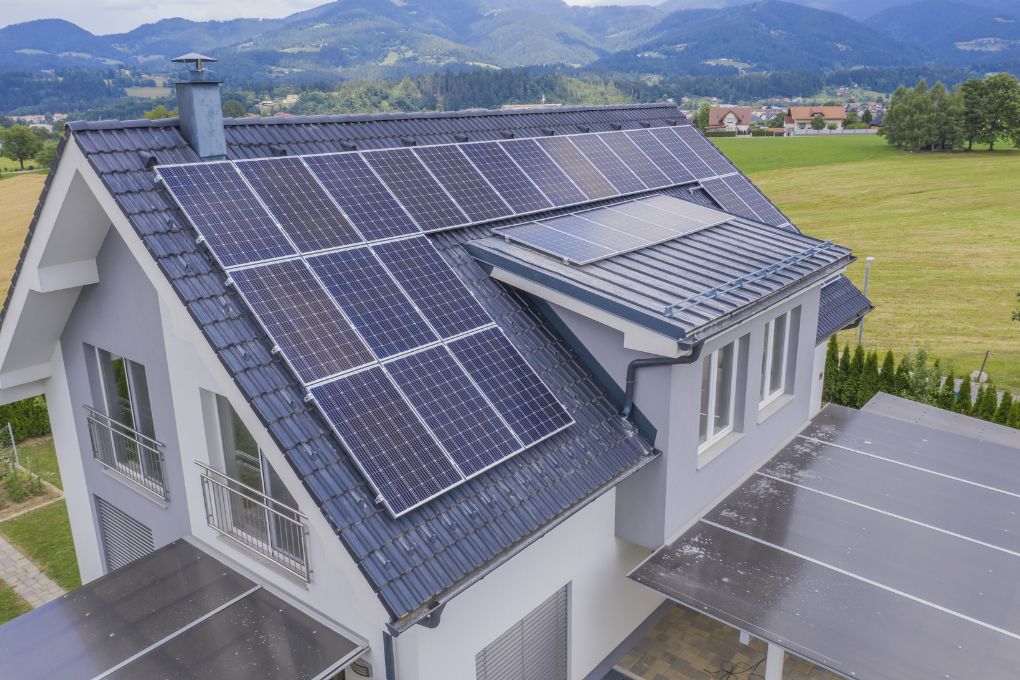
How are you? Are you ready to take advantage of the sun’s amazing power? Solar panels can be a game-changer for your home. They can help you save money, cut your carbon footprint, and live a more environmentally friendly life. But before you switch to solar energy, you might be wondering, “How many solar panels do I actually need for my house?” Don’t worry! I’m here to help you understand this subject and walk you through the steps.
Let the Sun Shine: How Solar Panels Work
Let’s talk about solar panels before we get into the details of panel numbers. These amazing gadgets are like little superheroes that turn sunlight into electricity. They are made up of many photovoltaic (PV) cells, which turn sunlight into electricity when exposed to it. This clean, renewable energy can power your home, make you less dependent on the grid, and even earn you credits if you sell any extra energy back to your utility company.
Now, I’d like to tell you a short story about my friend Fergus. Fergus loved nature and wanted to live more sustainably and cut down on his carbon footprint. He put solar panels on his roof because he wanted a greener future. Fergus watched the solar panels being put up with a glint in his eye and a sense of accomplishment. He had no idea that this decision would not only change his house but also help him save money.
Number Crunching: Things to Think About
Okay, let’s get down to business and answer the most important question: how many solar panels do you need? The answer depends on a number of things, so let’s go over them:
Your Energy Use: The first thing to do is figure out how much electricity your home uses. Look at your utility bills to figure out how many kilowatt-hours (kWh) you use each month. You’ll need more solar panels to meet your energy needs the more energy you use.
Here’s a story about Minis, a homeowner who liked to save money and wanted to use renewable energy while keeping costs down. Minis looked at her electricity bills and found that she had been leaving her appliances on standby mode without realizing it. This was wasting a lot of energy. With this information, Minis made a conscious effort to cut down on her energy use, which made her solar panel installation even better.
Sunlight: The amount of sunlight where you live is a very important factor in figuring out how many solar panels you need. In places with a lot of sunlight, solar panels will produce more electricity, so you can put up less of them. On the other hand, if you live in a place where there is less sunlight, you might need more panels to make up for the lower amount of energy you get.
Panel Efficiency: Solar panels come in different shapes, sizes, and levels of how well they work. Higher-efficiency panels make more electricity from the same amount of sunlight, so you’ll need fewer panels to meet your energy needs. But keep in mind that panels with a higher efficiency might cost more.
Figuring out how many solar panels you need
Now that you know what goes into the equation, let’s figure out how many solar panels you need. Keep in mind that the goal is to make enough electricity to power your home while staying within your budget and using all of the space on your roof.
Find out how much energy you use each day: Divide the number of kWh you use in a month by 30 to get the average number of kWh used per day. This number will help you figure out how many solar panels you will need to meet your needs.
Check the ratings of the panels. Solar panels usually have a wattage rating that shows how much power they produce. Take for example that you have a 300-watt panel. Divide your daily energy use by the wattage of a panel to figure out how many panels you need. For example, if you use 10 kWh per day and your panels are 300 watts, you would divide 10 kWh by 0.3 kWh (300 watts) to get 33.33. In this situation, you would need about 34 solar panels to get all the energy you need.
Think about how well the panels work and how much sunlight is available. You can change the number of panels based on how well the panels work or how much sunlight is available where you live. If your panels are more efficient, you may be able to use less of them, but if you don’t get as much sunlight, you may need more panels.
It’s important to remember that these numbers only give a rough idea. It is a good idea to talk to a professional solar installer. They will figure out what you need, look at the space on your roof, and design a system that will make the most of your solar potential.
Now, let’s talk about someone who not only put up solar panels successfully but also benefited from them. John came along. He was a determined homeowner who cared a lot about being green. John did a lot of research, talked to experts, and planned his solar panel installation carefully. He worked hard, and it paid off when he was able to use the power of the sun to meet his energy needs. This cut his monthly utility bills by a lot and helped the environment.
Changing to solar power
Now that you know how to figure out how many solar panels you need for your house, you can take the next steps toward a solar-powered future:
Consult with Solar Experts: Talk to reputable solar companies or energy consultants who can tell you if your home is a good fit for solar panels. They will give you personalized advice, do site inspections, and give you accurate estimates based on your specific needs.
Think about your budget. Installing solar panels costs money up front, but they pay for themselves over time by saving you money on energy. Check your budget and look into different ways to pay for the move, such as loans or leasing programs.
Check out incentives and rebates. Find out what local, state, and federal incentives are available for installing solar panels. Some of these are tax credits, grants, and net metering programs, which let you sell any energy you don’t use back to the grid.
Choose an Installer with a Good Name: Choose a solar installer who has been in business for a long time, has good customer reviews, and is certified. Ask for multiple quotes and compare prices, warranties, and how well the system works to make a smart choice.
In conclusion, using solar energy to power your home is a big decision that can help the environment and save you money. By figuring out how much energy your home uses, how much sunlight is available, and how efficient the panels are, you can figure out how many solar panels you need. Make sure to talk to experts, plan your installation well, and take advantage of any incentives that are available. The first step on the road to solar success is to use the sun’s energy, reduce your carbon footprint, and embrace a brighter, more sustainable future.
So, are you ready to see what solar panels can do for your house? Let’s start using the sun’s energy and move together in a greener, cleaner direction!
Also Read : Top 7 Steps To Build Smart Home AI Training Dataset



